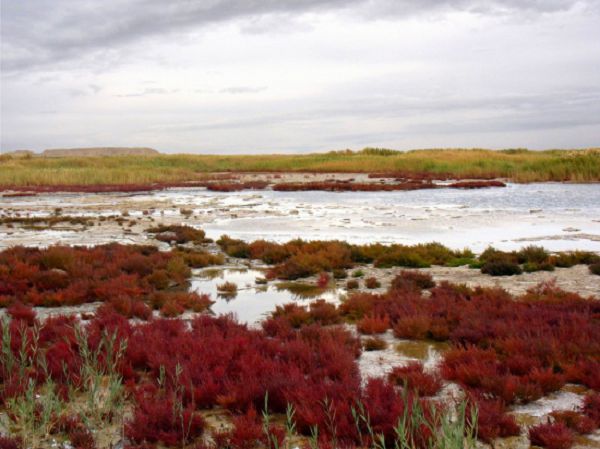Conservation measures of flowers planted in courtyard in October
In October, with the weather getting colder, the maintenance and management of flowers planted in the courtyard should be adjusted accordingly. The main management measures are as follows:
I. transplanting
According to the local climate change, some deciduous ornamental plants can be transplanted after Frosts Descent's defoliation, such as hibiscus, bauhinia, elm plum, pomegranate, clove, red leaf plum, purple magnolia, green peach, Birthday Bun with Bean Paste Filling, Fenghua rose, red leaf Berberis, golden leaf privet and so on. For some evergreen flowering shrubs, such as broad-leaved ten meritorious shrubs, Phyllostachys pubescens, Shu juniper, dragon cypress, Platycladus orientalis, four Seasons, Gardenia jasminoides, Populus tomentosa, etc., when transplanting, one is to cut before transplanting, the second is to bring good soil balls, and the third is to strengthen watering and spraying management after transplanting. The species of courtyard grass flowers that can be planted are: carnation, daisy, hollyhock, kale, pansy, marigold, cherry, fluke, goldfish grass, onion orchid, Ophiopogon japonicus, auspicious grass and so on. Feasible bulb flower species are: daffodils, Hongkou daffodils, tulips, hyacinths and so on.
2. Pruning
The hedges and balls in the courtyard should be trimmed for the last time this year, and the standard is flat, straight and round. The garden color blocks and hedge plants suitable for pruning are: Phnom Penh privet, red leaf Berberis, safflower? Wood, Platycladus orientalis in Phnom Penh, yellow poplar in Phnom Penh, big leaf yellow poplar, melon seed yellow poplar, French holly, privet, heather, lobular privet and so on. The balls that need to be pruned are: Dragon cypress, yellow poplar, red bayberry, wolfberry, holly, heather, Haitong, firethorn and so on. For continuously flowering flowers and trees in the courtyard, such as rose, crape myrtle, five-colored plum, triangulated plum, etc., we should continue to cut off the stump and stem, and cut the branches that have flowered moderately. For the grass flowers planted in the courtyard, such as red, marigold, thousand-day red, etc., it is necessary to cut off the open inflorescences in time to promote their lateral shoots to continue to blossom and blossom, so as to prolong the ornamental period.
Third, watering
For the newly planted courtyard flowers and trees in that year, we should continue to do a good job in watering and spraying: first, we should keep the soil at the roots moist, but there should be no stagnant water; second, we should continue to spray water on the leaves. In addition, we should also do a good job of spraying water and moisturizing the newly planted grass flowers.
IV. Fertilization
For autumn grass flowers planted in the courtyard, it is appropriate to apply balanced quick-acting fertilizer of nitrogen, phosphorus and potassium; for sweet-scented osmanthus flowers that have already bloomed, base fertilizer can be opened in annular trenches; for pruned rose, begonia, crape myrtle, hibiscus, camellia, Michelia, plum blossom, wax plum, etc., appropriate amount of compound fertilizer can be applied. For Phyllostachys pubescens and Firethorn, as well as bergamot, kumquat, daidai and golden marbles in the south, a small amount of available phosphorus and potassium fertilizer can be properly applied to prolong the fruit appreciation period.
V. Disease and pest control
Stem borer pests such as plum blossom, red leaf plum, cherry blossom and begonia planted in the ground will continue to be controlled with poison swabs. The withered branches and leaves falling in the courtyard should be cleaned and burned in time. In the north, the thick tree trunks in the courtyard can be whitened at the end of the month, or stone-sulfur mixture can be applied directly on the trunk.
VI. Seed collection
Available woody plant species are: Luohan pine, bamboo and cypress, disease-free, seven-leaf tree, purple magnolia, magnolia, magnolia, Taxus, Camellia oleifera, etc. These seeds must be stored in wet sand. The feasible seed species for dry storage are: crape myrtle, Liriodendron chinense, red maple, chicken claw maple, golden pine, metasequoia, Cryptomeria fortunei, Sapium sebiferum, Albizia glabra, Luan tree, hibiscus, southern sour jujube, bauhinia, camptotheca, Chongyang wood, Wujiao maple and so on. Available grass flowers are: a bunch of red, cockscomb, zinnia, thousand-day red, Xiaoli chrysanthemum, marigold, peacock grass, chrysanthemum, impatiens, purple jasmine, ground skin, wheat straw chrysanthemum, Persian chrysanthemum, alpine snow, poinsettia, mimosa, dance grass and so on.
In addition, at the end of October, the underground roots of canna and dahlia were dug up when the aboveground part was close to withering, and the sand was stored indoors, keeping the room temperature not less than 5 ℃, and then cut and planted again in the spring of next year.
Related
- What if the leaves of potted flowers turn yellow?
- Florescence Control of several Flowers
- Anti-freezing technology and post-freezing nursing technology of flowers
- What is the classification of flowers? What are the common methods of flower classification?
- Prevention and control of alkali and acid damage of flowers in courtyard
- Technology of Anti-freezing and restoring growth of Flower seedlings in greenhouse and greenhouse
- How does flower fertilization not hurt the root? Fertilization technology of flowers
- Key points of disinfection in flower greenhouse
- Several pesticides that are banned or used cautiously in flowers
- How to fertilize the flowers that watch the leaves?



